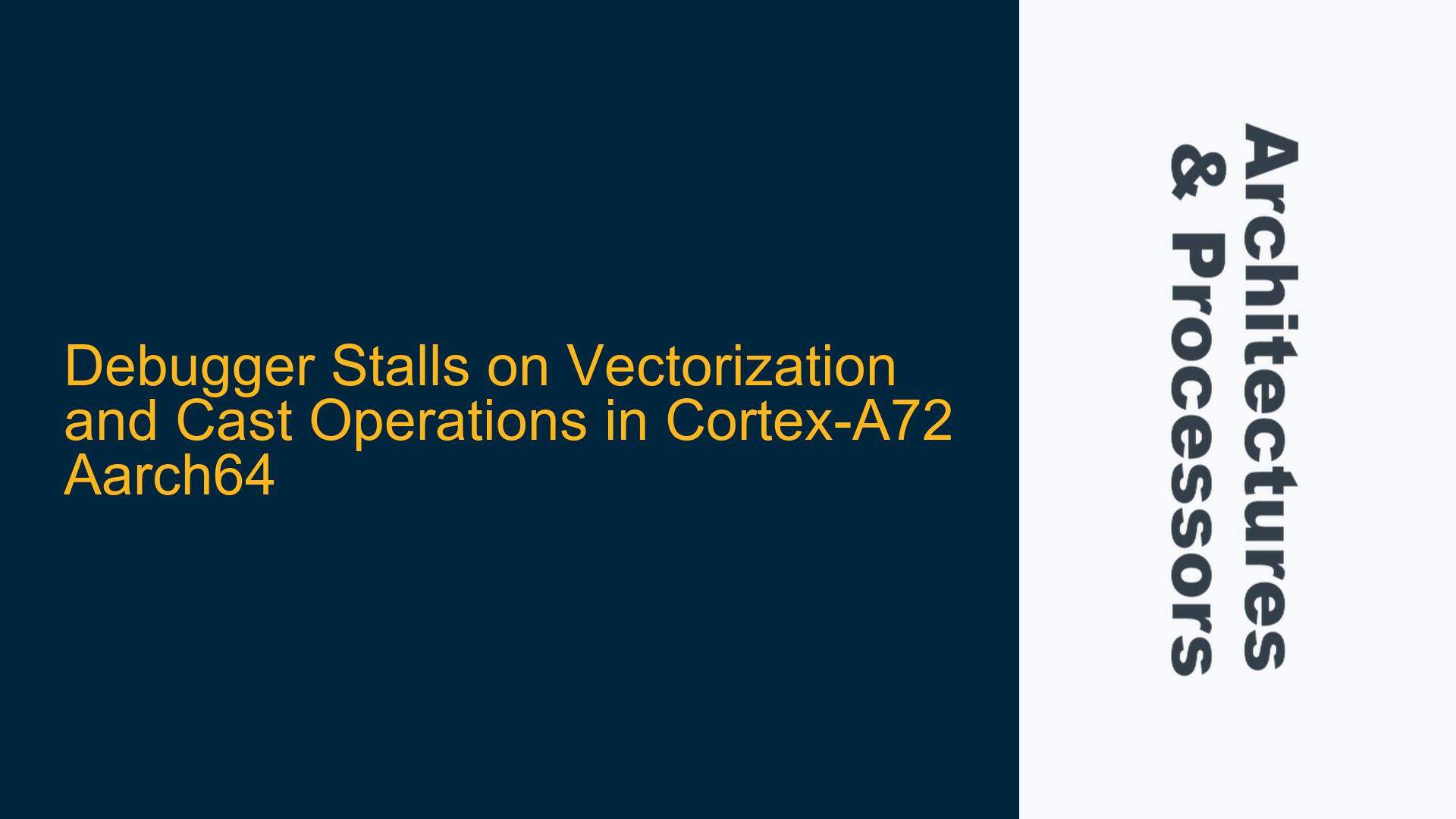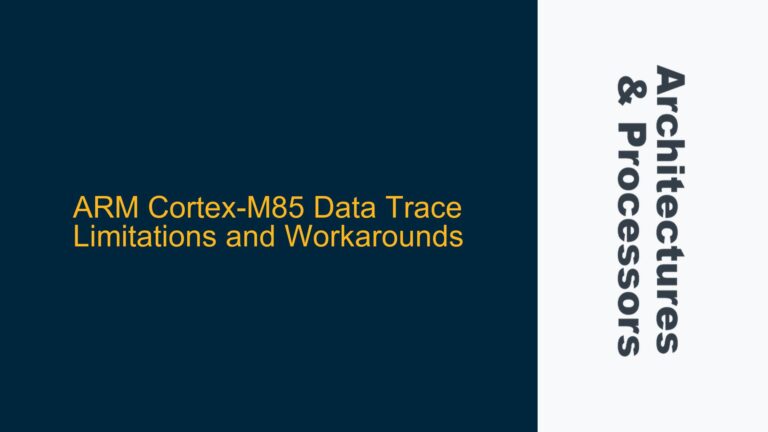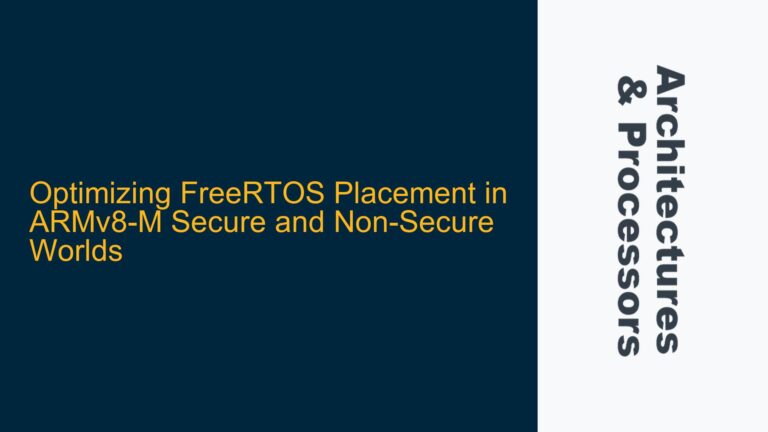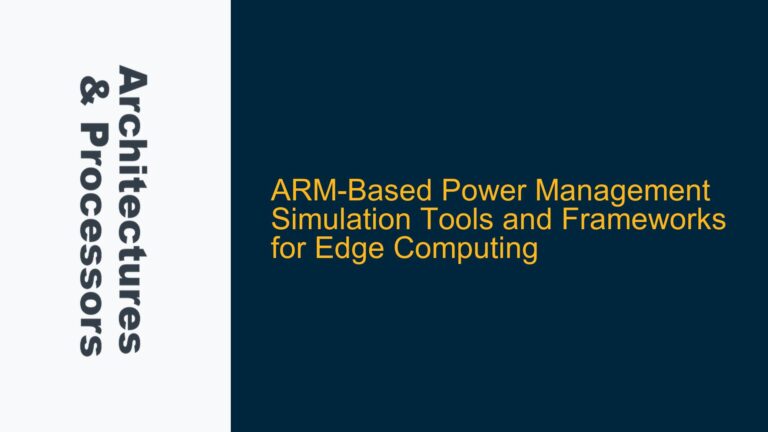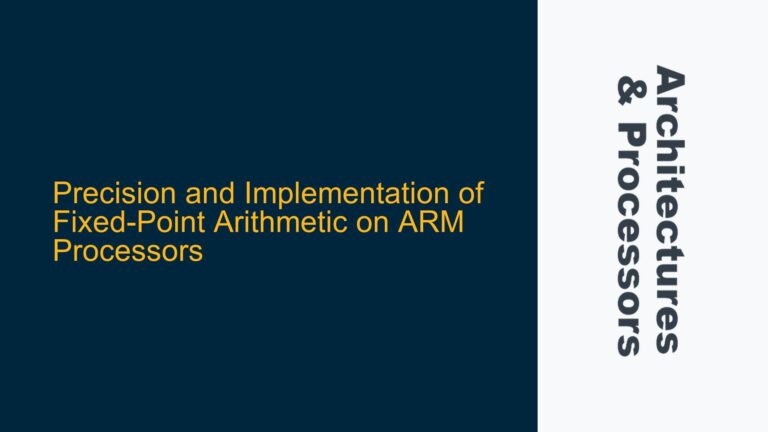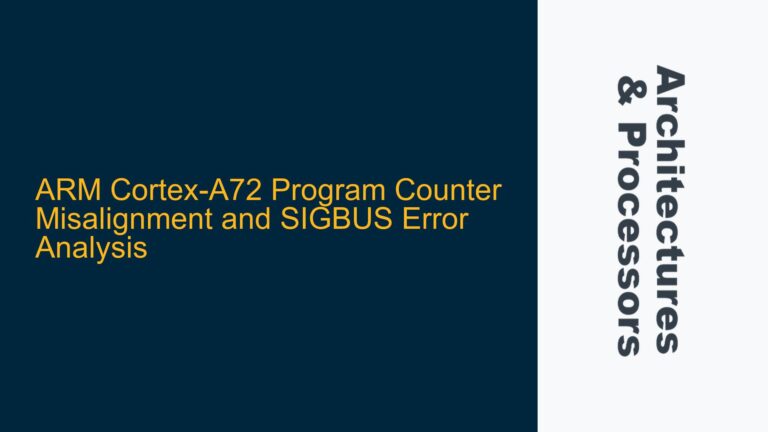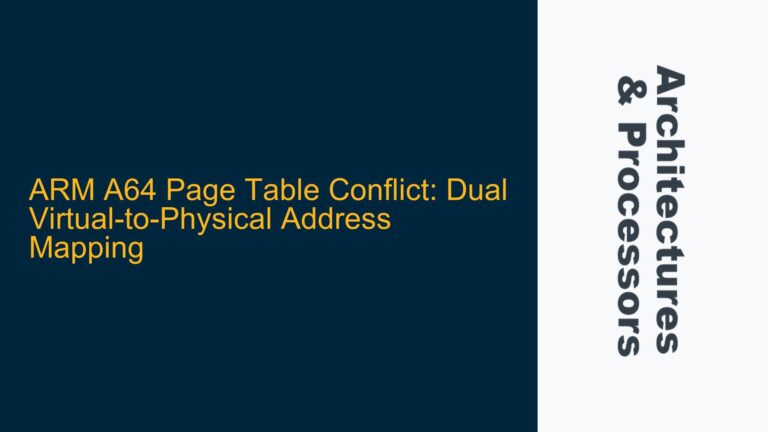ARM Cortex-A72 Debugger Hangs During NEON Vectorization and Type Casting
The issue at hand involves the debugger stalling or failing to execute specific lines of code when working with ARM Cortex-A72 Aarch64 processors, particularly during NEON vectorization and type casting operations. The debugger appears to hang indefinitely when encountering instructions such as uint8x16_t aa = vmovq_n_u8(0); or double bb = (double) a;. This behavior suggests a potential misconfiguration or limitation in the debugger’s handling of advanced ARMv8 features, such as NEON intrinsics and floating-point operations, especially when operating in higher exception levels like EL3.
The Cortex-A72 is a high-performance processor capable of executing advanced SIMD (Single Instruction, Multiple Data) operations through the NEON unit, which is part of the ARMv8 architecture. However, the debugger’s inability to proceed past these instructions indicates a possible mismatch between the debugger’s capabilities and the processor’s execution environment. This issue is particularly relevant for developers working on low-level firmware or performance-critical applications that rely on vectorization and type casting for optimization.
Exception Level Mismatch and Debugger Configuration Limitations
One of the primary causes of this issue is the execution of code in EL3 (Exception Level 3), which is the highest privilege level in the ARMv8 architecture. EL3 is typically reserved for secure monitor code and firmware, and running user or application code at this level can lead to unexpected behavior, especially with advanced features like NEON and floating-point operations. The debugger may not be fully equipped to handle these operations in EL3, as it is designed to operate primarily in EL1 (Operating System level) or EL0 (User level).
Another potential cause is the debugger’s inability to properly interpret or execute NEON intrinsics and type casting operations due to incomplete or misconfigured debug symbols. NEON intrinsics, such as vmovq_n_u8, are complex instructions that require precise handling by the debugger. If the debugger lacks the necessary support for these instructions, it may fail to execute them correctly, leading to a stall. Similarly, type casting operations, especially those involving floating-point numbers, can be problematic if the debugger does not fully support the ARMv8 floating-point architecture.
Additionally, the issue could stem from a lack of proper initialization of the NEON and floating-point units. ARM processors require explicit enabling of these units before they can be used. If the units are not enabled, the processor may encounter undefined behavior when attempting to execute NEON or floating-point instructions, causing the debugger to hang.
Switching to EL1/EL0 and Enabling NEON/FPU for Debugging
To resolve this issue, the first step is to ensure that the code is executed in the appropriate exception level. EL1 or EL0 is the recommended level for most application code, as these levels provide the necessary support for NEON and floating-point operations without the additional complexities of EL3. Switching from EL3 to EL1/EL0 can be achieved by modifying the processor’s exception level configuration during initialization. This typically involves writing to the SCR_EL3 (Secure Configuration Register at EL3) to set the appropriate bits for lower exception levels. For example, setting the NS (Non-Secure) bit and the HCE (Hypervisor Call Enable) bit can facilitate the transition to EL1.
Once the code is running in the correct exception level, the next step is to ensure that the NEON and floating-point units are properly enabled. This can be done by setting the appropriate bits in the CPACR_EL1 (Architectural Feature Access Control Register at EL1). Specifically, the CPACR_EL1.FPEN (Floating-Point Enable) and CPACR_EL1.ASEDIS (Advanced SIMD Disable) bits should be configured to allow access to the NEON and floating-point units. For example, setting CPACR_EL1.FPEN to 0b11 enables full access to the floating-point and NEON units.
In addition to configuring the exception level and enabling the NEON/FPU units, it is crucial to verify that the debugger is properly configured to support ARMv8 features. This includes ensuring that the debugger has the necessary symbols and support for NEON intrinsics and floating-point operations. Some debuggers may require specific plugins or extensions to fully support ARMv8 features. For example, the ARM DS-5 Debugger provides comprehensive support for ARMv8 architectures, including NEON and floating-point operations, but may require additional configuration to enable these features.
Finally, if the issue persists, it may be necessary to examine the specific instructions causing the debugger to hang. This can involve disassembling the code to verify that the instructions are being generated correctly and that there are no unexpected side effects. For example, the vmovq_n_u8 intrinsic should generate a NEON instruction that moves an immediate value into a NEON register. If the instruction is not being generated correctly, it may indicate a problem with the compiler or the debugger’s interpretation of the intrinsic. Similarly, the type casting operation double bb = (double) a; should generate a floating-point conversion instruction. If the instruction is not being generated or executed correctly, it may indicate a problem with the floating-point unit configuration or the debugger’s support for floating-point operations.
By following these steps, developers can resolve the issue of the debugger stalling during NEON vectorization and type casting operations on ARM Cortex-A72 Aarch64 processors. Proper configuration of the exception level, enabling of the NEON and floating-point units, and ensuring that the debugger is fully equipped to handle ARMv8 features are key to achieving successful debugging and execution of advanced ARM instructions.
